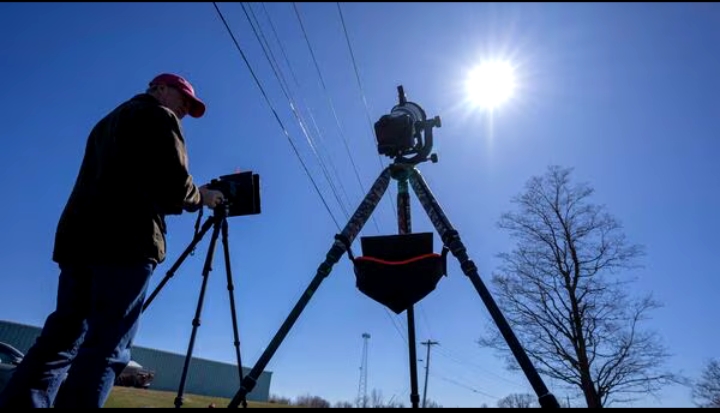2024 solar eclipse: Here’s 10 things you need to know

Today (April 8) a total solar eclipse will sweep across North America from Mexico, through 15 U.S. States and up through Canada. For viewers inside the path of totality, the moon will completely cover the sun, darkening the sky and revealing our star’s hidden outer atmosphere.
A total solar eclipse occurs when the moon passes directly between the sun and Earth, casting a shadow on our planet. It appears almost exactly the same size as our sun and for those witnessing the event from the path of totality, it will completely cover the sun’s visible disk.
Remember never look directly at the sun. To safely view all of this event, you must use solar glasses or filters. Only those in the path of totality will be able to remove them briefly to see the sun’s corona with their naked eyes. Those not in the path of totality must keep them on the entire time.
Read also:
- Nigeria: Litany of failed generations, fears for generations unborn
- Earth Day: Why Nigerians are show more interest in environmental issues
- April Fools’ Day: what to know about the playful day
- St. Patrick’s Day: Things you should know about St. Patrick
- New Year’s Resolutions: 5 ways to build lasting habits
Everyone observing the partial phases of this eclipse — and for those outside the path of totality, that’s the entire event — will need to wear solar eclipse glasses while cameras, telescopes and binoculars will need solar filters placed in front of their lenses.
10 things you probably didn’t know about the total solar eclipse 2024:
- Totality will last for 100 minutes, crossing over 10,000 miles from the Pacific to the Atlantic.
- Unlike the ‘Ring of Fire’ eclipse in October 2023, this is a total solar eclipse, revealing the sun’s corona.
- Fifteen U.S. states, parts of Mexico, and seven Canadian provinces will experience totality.
- Tennessee and Michigan will only experience a partial totality in small areas.
- Nazas, Mexico, will witness the longest totality of 4 minutes and 28 seconds.
- This eclipse is part of the Saros 139 cycle, occurring every 6,585.3 days.
- The path of totality is influenced by Earth’s tilted axis and the seasons.
- Around 40 million people live within the path of totality, with major cities like San Antonio and Toronto included.
- Alaska will miss totality on April 8, but will experience it on March 30, 2033.
- The eclipse will end with a sunset view from the west coast of the U.K.

